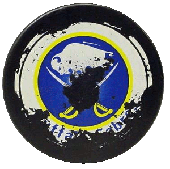Congratulations Jim Graham, the new Director of Corporate Outreach for the Buffalo PMI. As Director of Corporate Outreach, Jim will work with local business leaders to promote the value of project management and the many services provided by PMI.
If you or your company is interested in learning more about the PMI and how they can help your business, please don’t hesitate to contact Jim.
More About Jim
A lifelong Buffaloian, with a beautiful family; twin 8 year old boys and a 6 year old girl. Jim has 10+ years experience as a Program and Project Management professional, having spent the last several years with a national IT services firm, delivering complex IT solutions for Fortune 500 companies. Jim has a BA in Psychology, and a MS in IT Management. He first joined the Buffalo PMI in 2005, earning his PMP and later teaching PMP prep classes. Jim is active in local youth hockey, previously serving on the Board of Directors, Mite Program Director, and Head Goaltending Coach for the Buffalo Shamrocks Hockey Club, and is now currently coaching with the Clarence Mustangs Hockey Club.



 This month, HIMSS released the 26th Annual HIMSS Leadership Survey, which gathers opinions of IT professionals in healthcare provider organizations regarding their use of technology.
This month, HIMSS released the 26th Annual HIMSS Leadership Survey, which gathers opinions of IT professionals in healthcare provider organizations regarding their use of technology.
 We are in the final week until the regular season the National Hockey League comes to a conclusion. Teams are fighting for playoff positions, but our attention is drawn to not the top of the standings but to the bottom. The “race” to 30th place has caused a lot of discussion on sports talk radio and national publications. Sharp focus is on the current last place team, the Buffalo Sabres. Fans are divided on whether the team should deliberately try to loose games, in order to get a chance at the number one draft pick, or at worst the number two draft pick (per the NHL’s draft lottery rules). As a project manager, I took a broader look at this event in Sabres history, as the fan opinions steadily grow apart. Although sports fans will always have varying opinions, what has been missing is a solid project Stakeholder Communication Plan.
We are in the final week until the regular season the National Hockey League comes to a conclusion. Teams are fighting for playoff positions, but our attention is drawn to not the top of the standings but to the bottom. The “race” to 30th place has caused a lot of discussion on sports talk radio and national publications. Sharp focus is on the current last place team, the Buffalo Sabres. Fans are divided on whether the team should deliberately try to loose games, in order to get a chance at the number one draft pick, or at worst the number two draft pick (per the NHL’s draft lottery rules). As a project manager, I took a broader look at this event in Sabres history, as the fan opinions steadily grow apart. Although sports fans will always have varying opinions, what has been missing is a solid project Stakeholder Communication Plan.
 A Project Manager does not necessarily have the luxury of picking their project sponsor. At times the cards are dealt and you have to deal with a difficult sponsor or team.
A Project Manager does not necessarily have the luxury of picking their project sponsor. At times the cards are dealt and you have to deal with a difficult sponsor or team.